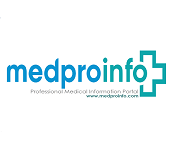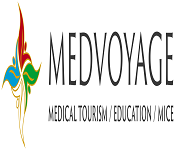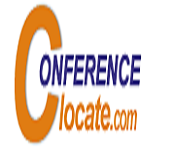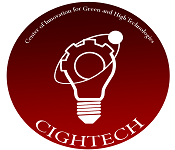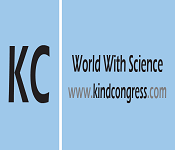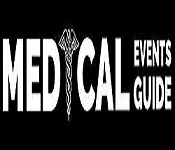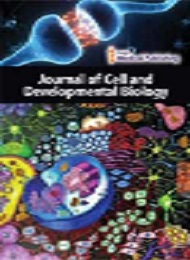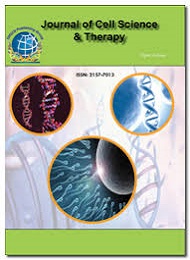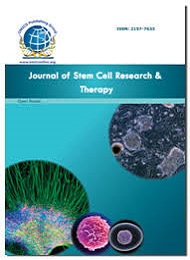Theme: Latest Scientific Advances in Tissue science and Regenerative Medicine
Tissue Regen 2020
Join us for 11th Tissue Science and Regeneration Congress
Update your skills, enhance your knowledge base, and broaden your horizons- all in one place!
Date: April 20-21, 2020
Venue: Kuala Lumpur, Malaysia
If you are interested to be a part of this event as a speaker or delegate!
Email at: connect@memeetings.com
Call at: 1-201-380-5561 (Extension No- 7007)
WhatsApp at: +44 7723584563
We cordially welcome all the interested participants to our upcoming 11th Tissue Science and Regeneration Congress which is going to be held during April 20-21, 2020 at Kuala Lumpur, Malaysia. This includes a wide range of Keynote presentations, plenary talks, Symposia, Workshops, Exhibitions, Poster presentations.
Tissue Regen 2020 will discuss various disciplines involved in the pre-clinical research, conduct of Tissue Science & Regenerative medicine. It will educate health care researchers about design, operation, organizing, research computing, regulatory aspects and reporting of Biomedical Engineering. It promotes better understanding by the general public about the importance of Tissue Engineering, Regenerative medicine in prevention, diagnosis and treatment of disease. This conference conduct presentations, distribute information, meet with current and potential scientists, make a splash with new Tissue engineering, Regenerative medicine, Bio banking, Tissue culture and preservation, Stem cell Therapy research developments, and receive name recognition at this 2-days event. World renowned speakers and the most recent techniques, developments, the newest updates in Tissue Science, Regenerative medicine Research are hallmarks of this conference.
Why to Attend Tissue Regen 2020 ?
11th Tissue Science and Regeneration Congress have the platform to fulfil the needs in the transformation of this science of hope, to serve promptly with solutions to all the needs. Tissue Regen 2020 will have participants across the world to discuss the Congress goal.
About Organizers
ME Conferences is one of the leading Open Access publishers and organizers of international scientific conferences and events every year across USA, Europe & Asia. Conference Series has so far organized 3000+ Global Events with over 600+ Conferences, 1200+ Symposiums and 1200+ Workshops on Medical, Pharma, Engineering, Science, Technology and Business with 700+ peer-reviewed open access journals in basic science, health, and technology.
Target Audience
-
Gene Therapy Scientists
-
Stem Cell Researchers
-
Emeritus and Academic professors
-
Cell Biologists
-
Genetic scientist
-
Molecular Biologists
-
Regenerative Medicine researcher
-
Business Entrepreneurs
-
Drug Manufacturing Companies
-
Stem cell Developers and Investigators
-
Tissue Engineers
-
Woundcare Specialists
Scientific Sessions of Tissue Regen Conference:
Tissue Regen 2020 will encompass recent researches and findings in Tissue science and Regeneration technologies, stem cell therapies and transplantations and other advancements in stem cell research and Tissue science. Tissue Regen 2020 will be a great platform for research scientists and young researchers to share their current findings in this field of applied science. The major scientific sessions in Tissue Regen 2020 will focus on the latest and exciting innovations in prominent areas of Tissue science and stem cell research.
Track 1: Tissue Science
Tissue is a cellular organisational level between cells and a complete organ. A tissue is an ensemble of similar cells and their extracellular matrix from the same origin that together carry out a specific function. Organs are then formed by the functional grouping together of multiple tissues. Tissue used for research can be called many different things: specimen, biological samples or human biological material. All of these terms refer to a small piece or sample of tissue or fluid and are used interchangeably. When researchers say tissue they can mean blood, urine, saliva, feces, fluid from the spine and brain, organ tissue, bone marrow, tumor tissue, lymph nodes, lymphatic fluid, and many others.
Track 2: Regenerative Medicine
Regenerative Medicine goes for helping the body to shape new tissue to replace lost ones. This will give curative treatment to conditions .The human body has an endogenous arrangement of recovery through foundational microorganisms, where undeveloped cells are discovered nearly in every kind of tissue. The thought is that upgrading of capacity is best proficient by these cells. Regenerative prescription involves the utilization of tissue designing and undifferentiated organism innovation.
Track 3: Cellular and Gene Therapies
Cellular therapy (CT) is the transplantation of human cells to replace or repair damaged tissue and/or cells. With new technologies, innovative products, and limitless imagination, many different types of cells may be used as part of a therapy or treatment for a variety of diseases and conditions. Some of the cells that may be used include hematopoietic (blood-forming) stem cells (HSC), skeletal muscle stem cells, mesenchymal stem cells, lymphocytes, dendritic cells, and pancreatic islet cells. It is used to treat a variety of blood cancers and hematologic conditions.
Gene therapy is the introduction, removal, or change in the content of a person’s genetic code with the goal of treating a disease, and hereditary diseases in which a defective mutant allele is replaced with a functional one. The transferred genetic material changes how a single protein or group of proteins is produced by the cell. Gene therapy can be used to reduce levels of a disease-causing version of a protein, increase production of disease-fighting proteins, or to produce new/modified proteins.
Track 4: Stem Cell Therapy
Stem cell therapy is the use of stem cells to treat disease. It is the treatment of various disorders, non-serious to life threatening, by using stem cells. These stem cells can be procured from a lot of different sources and used to potentially treat more than 80 disorders, including neuromuscular and degenerative disorders. Bone marrow transplantation is the most used stem-cell therapy, but some therapies derived from Umbilical cord blood are also in use. Research is proceeding to develop various sources for stem cells and to put on stem-cell treatments for Neurogenerative disease and conditions such as diabetes, heart disease, and other conditions. Stem-cell therapy has become controversial following developments such as the ability of scientists to isolate and culture embryonic stem cell to create stem cells using somatic nuclear transfer and their use of techniques to create Induced pluripotent stem cell.
Track 5: Biomedicine
Biomedical engineering is the application of the principles and problem-solving techniques of engineering to biology and medicine. This is evident throughout healthcare, from diagnosis and analysis to treatment and recovery, and has entered the public conscience though the proliferation of implantable medical devices, such as pacemakers and artificial hips, to more futuristic technologies such as stem cell engineering and the 3-D printing of biological organs. Biomedical engineering prominence's on the developments that surge the human health and health care at all levels. Biomedical Engineering also referred to as Bioengineering, BioMed or BME, is a multidisciplinary STEM field that combines biology and engineering, applying engineering principles and materials to medicine and healthcare.
Track 6: Biomaterials & Bioengineering
Biomaterials are being used for the healthcare applications from ancient times. But subsequent evolution has made them more versatile and has increased their utility. Biomaterials have revolutionized the areas like bioengineering and tissue engineering for the development of novel strategies to combat life threatening diseases. Together with biomaterials, stem cell technology is also being used to improve the existing healthcare facilities. These concepts and technologies are being used for the treatment of different diseases like cardiac failure, fractures, deep skin injuries, etc.
Tissue Engineering is addressed to create functional tissues which include cells, scaffolds, and bioactive molecules. It is the development of biological substitutes that maintains, improves or restores tissue functions resulting in sidestepping the problems associated with tissue damage. In the present, it is treated with transplants, mechanical devices or surgical reconstructions, these three medical therapies have saved and improved countless patients’ lives with few associated problems. For example, transplantation in organs shows limitations such as transplant rejections and lack of donor to cover all the worldwide demand. Mechanical devices are not capable of accomplishing all the functions related to the tissue and also the prevention of progressive deterioration in patients. Thus it has informed that Tissue Engineering arises from the need to provide more definitive solutions to tissue repairs.
Track 7: Artificial Organs
Artificial organs that have been designed to be used as an alternative to transplants, which are always in short supply. Failure of human's vital organs leads to death unless a replacement is found. The replacement can either be a transplant from another person or an artificial man-made organ. Use of transplants has the disadvantage of a limited supply and problems with immunorejection. Tissue Engineers started working on artificial organs for transplantation into the patients. Tissue engineering based tissues could allow to regenerate the whole organ or even to produce several organs for the purpose of grafting’s. Recently researchers are working on this field to develop and provide the tissue engineered organs and tissues to overcome the scarcity of the organs for transplants.
Track 8: Anti-Aging and Functional Medicine
Stem cells are feasible to design and test interventions to slow aging and improve health and longevity. It is believed that stem cell failure contributes to a decline in health during aging; so the development of effective methods to induce and differentiate pluripotent stem cells via cell replacement therapy provides an exciting avenue for the treatment of degenerative age-related diseases. It is believed that the regenerative potential of these cells is due to their high differentiation and proliferation capabilities, paracrine activity and immune privilege. Therefore, the stem cells can be used for cell replacement therapy as a therapeutic intervention aimed at mitigating the effects of aging.
Track 9: Cancer Therapy
Tissue Engineering has evoked new hopes for the cure of failure of Organs and loss tissue by creating functional substitutes in laboratory. TE provides new technology platforms to study the mechanism of angiogenesis and tumour cell growth and potentially tumour spreading in cancer research. The synthesis of TE with innovative methods of molecular biology and stem-cell technology may help investigate and potentially modulate principal phenomena of tumour growth and spreading, as well as tumour-related angiogenesis. TE can be applied to cure the cancer in Breast, Skin, Melanoma, Bone, Prostate, Liver and brain.
Track 10: Wound Care
Wound is an injury involving an external or internal break in body tissue, usually involving the skin. It occurs when the skin is broken or damaged because of injury. Causes of injury may be the result of mechanical, chemical, electrical, thermal, or nuclear sources. The skin can be damaged in a variety of ways depending upon the mechanism of injury. Wounds fall into two broad categories: open or closed. In a closed wound, tissue damage and bleeding occur under the surface of the skin. Examples of closed wounds include bruises. An open wound involves a break in the skin that leaves the internal tissue exposed. Open wounds may result from falls, blunt trauma, and surgery.
Track 11: Bio Banking
Bio banking is the process of storage of biological samples that can be a piece of human tissue taken from a healthy or a diseased part of the body, it can also be a sample of bodily fluid such as blood, urine or saliva. Tissue banking is the activity of processing, storage, and distribution of transplantable human tissues. Tissues retrieved from the human body are used to repair and or replace the diseased or lost tissues of living human body and have saved many precious lives. The common tissues used are cornea, skin, bones, cartilage, joints, heart valves, fascia, tendons and a human cadaver.
Track 12: Regenerative Rehabilitation
Regenerative rehabilitation is the values as of rehabilitation and regenerative medicine, with the ultimate goal of developing innovative and operative methods that promote the restoration of function through tissue regeneration and repair. In order to provide an optimal microenvironment for healing tissues, physical therapists use directed therapy to maximize the productivity of the body's innate healing processes. Rehabilitation coupled with regenerative medicine surgeries has shown improved outcomes for tissue regeneration. With innovative findings from medical researchers in tissue engineering and cellular therapies, physical therapies play an important role in translating these findings.
Track 13: Soft Tissue Replacement
In soft tissue implants, as in other applications that involve engineering, the performance of an implanted device depends upon both the materials used and the design of the device or implant. The initial selection of material should be based on sound materials engineering practice. The final judgment on the suitability of a material depends upon observation of the in-vivo clinical performance of the implant. This requirement of in-vivo observation represents one of the major problems in the selection of appropriate materials for use in the human body. Another problem is that the performance of an implant may also depend on the design rather than the materials themselves. Even though one may have an ideal material and design, the actual performance also greatly depends on the skill of the surgeons and the prior condition of patients. The success of soft tissue implants has primarily been due to the development of synthetic polymers. This is mainly because the polymers can be tailor-made to match the physical and chemical properties of soft tissues.
Track 14: Nanotechnology in Tissue Engineering
Nanotechnology is currently being utilized for tissue engineering and regenerative medicine. Nanostructures can mimic tissue-specific bio environments by designing constructs with particular biochemical, mechanical and electrical properties. Biomimetic nanopatterns alone can direct the differentiation of stem cells without involvement of exogenous soluble biochemical factors. This regulation of cellular behavior by nanotechnology is one of many examples demonstrating the significant applications of nanoengineering in biomedicine. Therefore, tissue can be engineered by employing these nanostructures for enhanced cell adhesion, growth and differentiation. As the range of tissues being proposed for engineering increases, there is also a proportional increase in demand for new scaffold properties.
Track 15: Stem Cell Therapies in Gynaecology
Stem cells as a new treatment modality for regenerative medicine, it involved in a new research effort and an increasing scientific interest in the field of stem cell-based therapy. We are therefore able to describe different areas in which stem cell research can be applied and developed in gynaecology. Hematopoietic stem cells have been used to set up therapeutic strategies for the treatment of gynaecological solid tumors such as ovarian cancer. Umbilical cord blood, which was often considered a waste material of the delivery, actually represents a precious source of stem cells that can be used for cell-based treatments of malignancies and inherited diseases. Feto-maternal cell traffic has recently been demonstrated through the placental barrier during pregnancy. This cellular exchange also includes stem cells from the fetus, which can generate microchimerisms in the mother and contribute to tissue repair mechanisms in different maternal organs. Stem cells can be used for prenatal transplantation to treat different severe congenital diseases of the fetus.
Market Analysis of Tissue Science and Regeneration Congress
In Tissue Science, Regenerative medicines play a major role. Regenerative medicines have the ability to repair, replace, and regenerate tissues and organs affected due to injury, disease. These medicines are capable of restoring the functionality of cells & tissues and are applicable in a wide range of degenerative disorders developing number of surgeries fueled by maturing populace and rising injury cases are expected to move request for s tissue repair gadgets and in turn give development openings for manufacturers. In expansion, the expanding number of items propelled and industry solidification are anticipated to fortify the tissue repair showcase over the estimate period. For occurrence, presentation of organic unites by driving producers is picking up clutch. Organic joins diminish the recuperation period and have less difficulty related to dismissal, which in turn is expected to boost request for these items over the estimate period. Developing number of patients enduring from sports related wounds is another calculate which is anticipated to advance tissue repair showcase development. Tissue Engineering is an inter corrective field that applies the principles of engineering and life sciences toward the development of biological substitutes that restore, maintain, or improve tissue function or a whole organ. Currently it has emerged as a rapidly diversifying field with the potential to address the worldwide organ shortage issue and comprises of tissue regeneration and organ replacement.
Importance & Scope:
A innovative set of tissue replacement parts and implementation strategies had shown a great uprising in Tissue engineering field. Cells placed on or within the tissue constructs is the most common methodology in tissue engineering. Regenerative medicine is not one discipline. It can be defined as a therapeutic intervention which “replaces or regenerates human cells, tissues or organs, to restore or establish normal function” and deploys small molecule drugs, biologics, medical devices and cell-based therapies. Regenerative Medicine-2015 is an captivated a locality of conscious discussions on novel subjects like Tissue Regeneration, Materials & Designs for Tissue Engineering, Stem Cell–Tools to Battle Cancer, Bioreactors in Tissue Engineering, Regeneration & Therapeutics, Cord Blood & Regenerative Medicine and Clinical Medicine. The two days event embeds a firm relation of upcoming strategies in the field of Tissue Repair & Regeneration with the scientific community. The theoretical and applicable knowledge shared, will also foster organizational collaborations to nurture scientific accelerations. We bring together business, creative, and technology leaders from the tissue engineering, marketing, and research industry for the most current and relevant.
Glimpse at Market of Regenerative Medicine:
There are strong pricing pressures from public healthcare payers globally as Governments try to reduce budget deficits. Regenerative medicine could possibly save public health bodies money by reducing the need for long-term care and reducing associated disorders, with potential benefits for the world economy as a whole. The global market for tissue engineering and regeneration products reached $55.9 billion in 2010, is expected to reach $59.8 billion by 2011, and will further grow to $89.7 billion by 2016 at a compounded annual growth rate (CAGR) of 8.4%. It grows to $135 billion to 2024.The contribution of the European region was 43.3% of the market in 2010, a value of $24.2 billion. The market is expected to reach $25.5 billion by 2011 and will further grow to $36.1 billion by 2016 at a CAGR of 7.2%. It grows to $65 billion to 2024.
The growing rate of Cell Therapy, TE, Gene Therapy and Small molecules over the Years:

Global data about Stem cell therapy, TE and Gene Therapy:

Target Audience of Tissue Science:
Industry 40%
Academia 50%
Others 10%
List of Major Tissue Science Society Worldwide:
USA & AMERICA
- New York Stem Cell Foundation
- American Academy of Anti-Aging Medicine
- American College of Medical Genetics (ACMG)
- American Board of Medical Genetics and Genomics
- American Society of Gene Therapy (ASGT)
- Canadian College of Medical Geneticists
- Canadian Collaborative Group for Cancer Genetics (CCGCG)
EUROPE
- European Society for Artificial Organs
- European Association of Tissue Banks
- Association of Genetic Nurses and Counsellors (AGNC), United Kingdom
- British Society for Genetic Medicine (BSGM)
ASIA PACIFIC & MIDDLE EAST
- The Japanese Society for Tissue Engineering
- Korean Tissue Engineering and Regenerative Medicine Society
- Genetics Society of Korea (GSK)
- Korean Society of Human Genetics
- Japan Society of Gene Therapy
Conference Highlights
- Tissue Science
- Regenerative Medicine
- Cellular and Gene Therapies
- Stem Cell Therapy
- Biomedicine
- Biomaterials & Bioengineering
- Artificial Organs
- Anti-Aging and Functional Medicine
- Cancer Therapy
- Wound care
- Bio banking
- Regenerative Rehabilitation
- Soft Tissue Replacement
- Nanotechnology in Tissue Engineering
- Stem Cell Therapies in Gynaecology
To share your views and research, please click here to register for the Conference.
To Collaborate Scientific Professionals around the World
| Conference Date | April 20-21, 2020 | ||
| Sponsors & Exhibitors |
|
||
| Speaker Opportunity Closed | |||
| Poster Opportunity Closed | Click Here to View | ||
Useful Links
Special Issues
All accepted abstracts will be published in respective Our International Journals.
- Journal of Tissue Science & Engineering
- Journal of Cell & Developmental Biology
- Journal of Stem Cell Research & Therapy
Abstracts will be provided with Digital Object Identifier by







